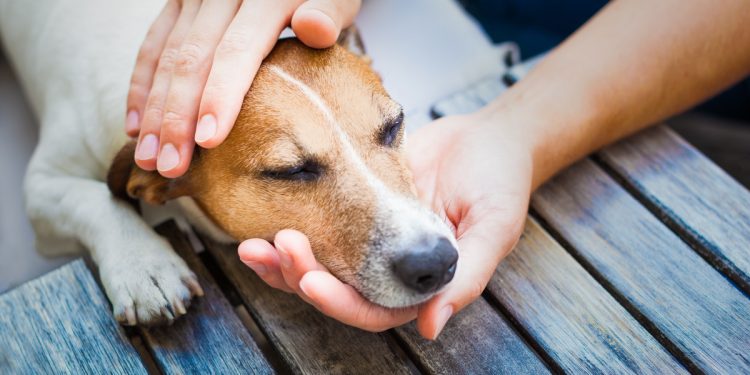You can take your pets to Mexico: Mexican customs will allow you to introduce domestic pets (cats or dogs) to Mexico, provided that you have the correct zoo-sanitary paperwork in order and the animal(s) appear in good health on arrival.
This guide gives you the details about how to prepare for the transport and importation of your pet(s) to Mexico and taking your pet(s) back to your home country, as well as sharing practical information about keeping your pets in Mexico.
Arriving with your pets in Mexico
Importing other pets to Mexico
Practical information about keeping pets in Mexico
Leaving Mexico with your pets
Useful web sites for pet owners
See Also: On Importing Pets and Animals to Mexico
How to bring your pets to Mexico
If you plan to take your cat(s) and/or dog(s) to Mexico, here are the guidelines you’ll need to follow so that you can get your pets transported on the airline (if you are flying) and gain entry to Mexico with your pets at the border.
If you plan to bring other animals to Mexico, e.g. birds, then you will need undertake further procedures to acquire additional permits for export (from your country) and import (to Mexico) of the animals, e.g. birds, reptiles.
Taking pets to Mexico on airlines
Each airline has its own rules about taking pets when you travel (and how many pets they will transport per passenger or family group). Following are universal guidelines that will apply to most airlines. You should, however, check your airline’s web site for latest details and policies and call them for clarification if necessary.
Crates and Kennels: The airline will require you to use a purpose-built crate (for cats) or kennel (for dogs) if you want to transport them on the airline. Cardboard or plastic boxes and other make-shift containers will not be accepted.
Health Certificates: According to SENASICA, If you are not traveling from the USA or Canada, you will need to show a health certificate from a veterinary surgeon.
Excess Baggage Fees: Fees vary by airline — check with them for details. If you have a big dog (combined weight of kennel and animal greater than 100lbs) then the dog may have to be transported separately (as cargo). Airlines have been restricting baggage allowances and increasing fees for excess baggage of late, so be sure to check this detail with your airline so that you understand the additional costs involved.
Proper Labeling on Crates and Kennels: Your full name, address and telephone contact numbers (at destination) need to be clearly displayed. The crate should indicate which way is up, and the words “LIVE ANIMALS” (in capital letters) should be prominently displayed. Your pet(s) should also be properly tagged.
Interior of Crates and Kennels: The interior should have some sort of absorbent lining to absorb any urine or feces. Shredded newspaper will work if you don’t have a purpose made material from a pet store. Do not place food or water inside the crate or kennel but instead place two dishes inside which airline staff may make use of. Some people freeze water in a dish, which melts during the flight providing your pet with water if it gets thirsty.
Upon Arrival: Have food and water ready for your pet. Mexican authorities will allow you to import a reasonable ration of dry food for your pet to eat whilst in-transit. You may place these items inside the crate or kennel; keep water containers and food packets sealed. You will need to present your health certificates to the zoo sanitary kiosk at the port of entry in Mexico for your pet to be allowed into the country. See detailed arrival information, below.
See Blog: A Park Full Of Schnauzers
Arriving with your pet in Mexico
You are permitted to import two pets (cats, dogs, or a cat and dog) into Mexico. This limit is per person, so if you are a couple, you can import up to 4 pets. Note that if you import more than 3 pets, you will need to pay additional fees. See the website links below for details and procedures.
If you are NOT traveling from the USA or Canada, before you travel, your veterinary surgeon needs to provide you with a health certificate for each pet, issued by an official authority or by a licensed veterinarian in your home country, that should include proof of vaccines against rabies and distemper, administered at least 15 days before the arrival of your pet in Mexico. If you live in the US or Canada you do not need to present this certificate.
The documents (an original and one photo copy) must be presented on official documentation (i.e. headed and/or sealed paper) provided by a competent authority or veterinarian and include:
- Your name and address in your country of residence, and the address of where you will be staying with your pet in Mexico
- A description of the animal(s)
- The date the animal(s) were vaccinated against rabies and distemper and the vaccination’s expiry date. (Animals less than three months old are exempt from this requirement.)
- A declaration from the veterinarian to state that, prior to your journey, the animal(s) appeared clinically healthy; and that the animals have been de-wormed internally and externally within six months prior to arrival in Mexico
- If you fail to comply with these requirements, you will be offered an opportunity to contact a vet in Mexico (at your expense) to attend the port of entry and issue the required documents.
On Arrival – Note
Your pet(s) need to be brought to Mexico in a pet transporter which is generally clean and hygienic, without a bed, and without any toys or ‘snacks’. Dry pet meal and water is allowed (see tips, above) but any accessories (e.g. beds, toys, snacks, chew-bones, etc.) will be confiscated for secure disposal.
Source: SENSAICA, Translated from the Spanish in good faith
On arrival at the port of entry (land, sea or air), take your pet(s) to the zoo sanitary kiosk (look for the acronym SAGARPA/SENSAICA which the Ministry responsible for this process) at the port of entry and present the documentation to facilitate your pet’s entry into Mexico.
Importing other pets to Mexico
According to the Mexican Customs website, other common pets including: canaries, hamsters, guinea pigs, Australian parrakeets, cockatiels, ferrets, parrots, tortoises, and small wild birds (but not predatory birds) can be brought to Mexico as part of the duty-free 3-pet allowance—if you have 4 or more pets, you need to pay import duties. All pets must pass zoosanitary inspection at the port of entry.
Airline restrictions: If you are flying to Mexico, check with the airline about restrictions they may have in place regarding the transportation of pets other than cats and dogs.
Importing any animal other than common pets defined in the Customs list requires more effort. You’ll might need export permits from your home country, and an import permit from Mexico.
Some animals (or species), even those listed on the common pet allowances may be banned from either export from your country of departure and/or import to Mexico.
See this page for more details, or contact your nearest Mexican Consulate for details if you want to import any animals or pets to Mexico that are not considered common pets.
See also: On Importing Pets and Animals to Mexico
Practical information about keeping pets in Mexico
If you plan to bring your pet to Mexico as part of a lifestyle change, for example, if you plan to retire here or live here part-time, or if you plan to visit Mexico with your pet, here are some practical tips:
Traveling with pets in Mexico: If you have your own car and transport your pets, be sure to take sufficient supplies with you on longer road trips; especially water. Don’t leave your pets locked-up alone in the car when it’s parked on a hot day as doing so may be fatal to them, especially if you leave the car exposed to the sun.
Taking pets on Mexico’s buses: Bus companies will transport cats and dogs in the hold, provided that they are traveling in a pet crate. Be sure to provide your pet with plenty of water and some food for longer journeys. Service pets are allowed to travel on-board; check with the bus company for detailed policies.
See also: Traveling by bus in Mexico.
Pet supplies: You can buy pet food and other supplies from all major supermarkets, and there are also a number of chain stores that cater specifically to pets in Mexico; the main ones are Petco, Petsy, +Kota, and Petland.
Vets and medical supplies: Vet surgeries are plentiful across Mexico and there is at least one vet even in smaller rural towns. Vet fees in Mexico are a small fraction of those charged in the US and Europe and pet medications are less expensive here, too. Look online for vets in your locale, or ask locally for a recommendation.
Taking dogs for walks: Parks in larger towns and cities are where most urban pet owners take their dogs for a daily walk. Larger towns and cities also have a cottage industry of dog walkers available. In rural areas, owners may take their dogs for walks in the countryside. It’s considerate to pick-up any dog mess and some towns and cities provide bins for disposal of dog waste at parks.
Dog walks on the beach: You can take dogs for walks on most beaches in Mexico; however some beaches in the most popular tourist areas (particularly those in Cancún and Riviera Maya, Puerto Vallarta and Los Cabos) now have signs up prohibiting dog-owners from taking their dogs on certain stretches of the beach. Check locally for details.
Pet-friendly restaurants: Some local restaurants, especially in rural towns and villages, will be amenable to well-behaved dogs. Most restaurants in larger cities and tourist areas will not accept pets indoors, except service dogs. Some restaurants may have an outdoor seating area where pets are welcome; check locally.
Pet-friendly accommodations: Most hotels and BnBs in Mexico do not allow pets to stay, with the exception of service pets who cannot be denied by law. When you search for a hotel or BnB online, check the option on the booking portal for pet-friendly hotels and this will filter out those that do accept pets.
Pet sitting and kennels: If you plan to go on a trip and don’t take your pets, you might ask a good neighbor or a friend to look after them in your absence. For longer trips, you might ask someone to house-sit for you (and look after your pets while you’re away) or you can take your pets to a local kennel. See the useful sites links at the end of this guide for links to kennels and catteries.
Leaving Mexico with your pets
When you leave Mexico with your pets, you will need to go online and search to find out what paperwork and procedures are required to re-import your pet back to your home country (or the country you plan to visit). Some countries have quarantine regulations in place which means that your pet will need to be quarantined (at your expense) for a determined period upon arrival before you can take it home with you.
Usually, the paperwork required to re-import your pet to your home country is similar to that Mexico requires to bring your pet to Mexico. Check with your country’s customs regulations for details.
You will also need an exit permit for your pet when you leave Mexico. This is issued by SAGARPA, the Mexican agricultural ministry who will also undertake visual inspection of your pet(s) to asses its state of health. This is only valid for six months. If you plan to be outside of Mexico for more than six months, before you return with your pet(s), you’ll need to get health certificates and vaccinations from a veterinary abroad before you can re-import the pet(s) to Mexico.
Useful web sites for pet owners in Mexico
Here is a list of useful contacts in relation to bringing your pets to Mexico as well as keeping pets in Mexico:
List of Requirements (Spanish) – The official government page that sets out the requirements for the import or cats and dogs to Mexico.
SAGARPA – The Mexican Agricultural Ministry, which is also responsible for zoo sanitary matters
SENASICA – Is related to SAGARPA and deals with the import/export of pets, animals and agricultural products. This page on their website contains information about importing pets to Mexico
SEMARNAT – Also related to SAGARPA, this ministry is responsible for environmental matters and you may need to refer to them if you plan to import pets other than cats or dogs
Mexican Kennel Association – Part of the International Kennel Association; this web site also has a link to the Mexican Cattery Association
Canine Carriers – If you want someone else to take care of your pet’s entry and exit from Mexico, you may hire a private firm like this one
Mexican Vets – Click the link to open Mexico’s online yellow pages. Search for the word veterinarios in your local area.
Mexican Consulates Abroad – Find your nearest Mexican Consulate in your home country
Foreign Consulates in Mexico – Find your country’s consulate in Mexico
Mexico in your inbox
Our free newsletter about Mexico brings you a monthly round-up of recently published stories and opportunities, as well as gems from our archives.



